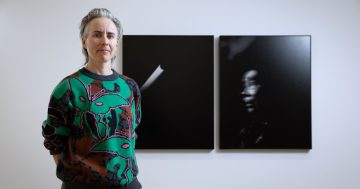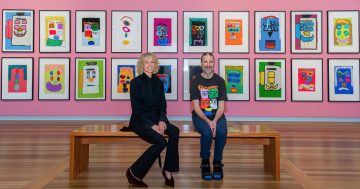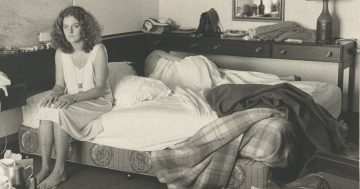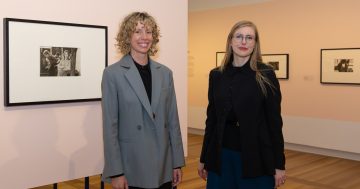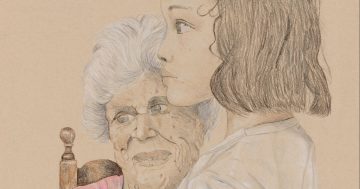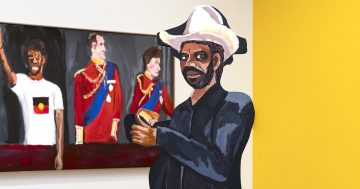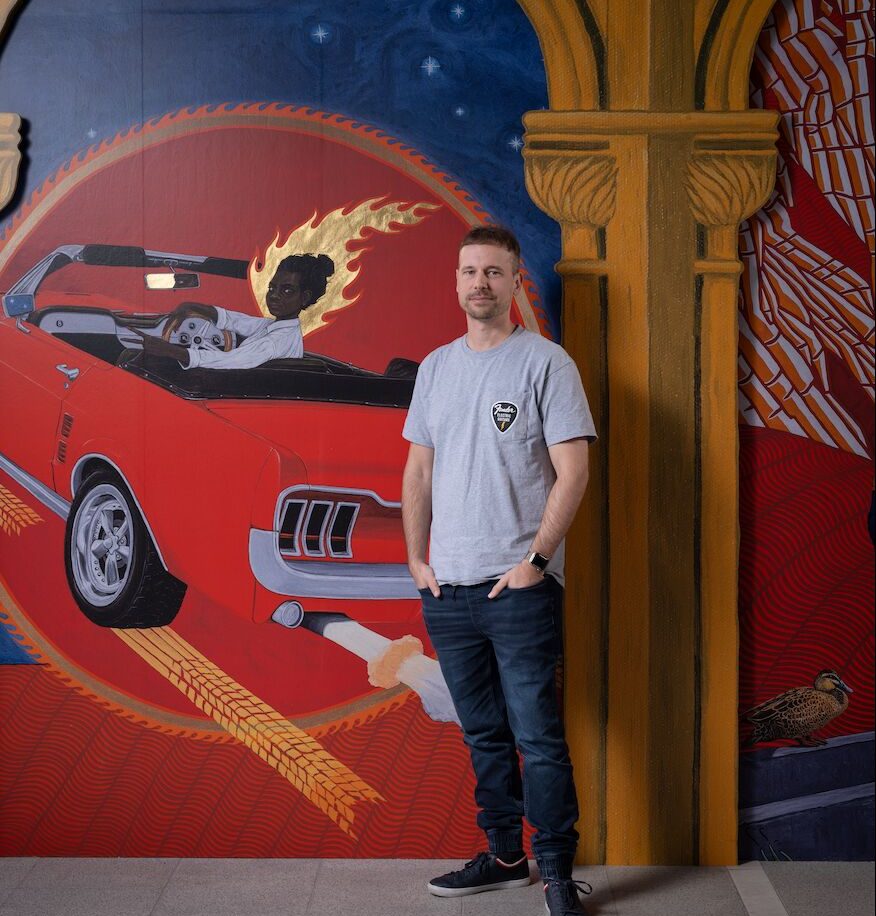
Dr Ryan Presley’s Paradise Won, on the external entry court wall at the National Portrait Gallery. Photo: National Portrait Gallery.
As you walk up the stairs from the National Portrait Gallery carpark and emerge onto the forecourt, stop and turn. And gasp.
The long brutalist concrete wall you’ve just walked through is now a radiant series of gold-leafed classical arches, filled with heroic portraits of people whose heads appear, halo-like, to be on fire.
Powerful figures drive flash cars, battle huge waves or ride rearing horses. Boomerangs look more like rocket-propelled weapons readied for flight. It’s vivid, challenging exciting work and that’s exactly how the artist intends it to be.
Paradise Won is the work of Dr Ryan Presley, a Marri Ngarr artist from Alice Springs, who also has Scandinavian heritage. The piece is a commission for the National Portrait Gallery and will be on view until May 2025.
“I was thinking about liberation and freedom,” he says of the work. “I wanted to show people who were impassioned and courageous, hence the theme of the emblazoned halo symbols around their heads, which also forces people to consider their own responses.
“They’re portraits of everybody and nobody in particular.”
The Christian iconography of Presley’s childhood is an important part of the sampling mix, re-shaped and reworked for contemporary but also timeless themes. Giotto is an influence, with his portraits of St Francis Assisi receiving the stigmata (the wounds of Christ).
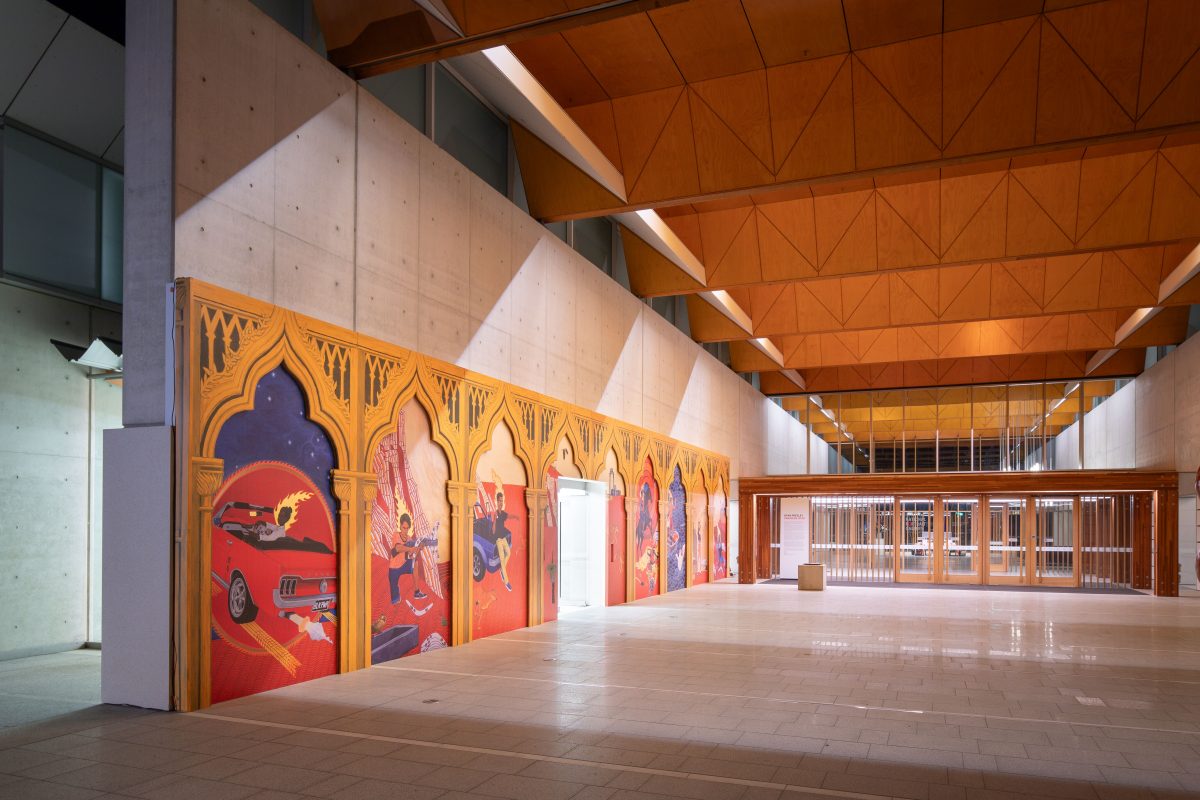
Paradise Won by Ryan Presley is installed along the National Portrait Gallery’s exterior wall. Photo: National Portrait Gallery.
“I’m not religious myself but I’m interested in how stories shape people’s decisions and influence actions in social groups, in society,” he says.
“I like that idea of inversions, of people with marginalised experiences becoming venerated figures. There’s also a vulnerability, because saints are also recognised after they’ve passed on, so there’s something here too about the preciousness and precarity of life.”
The references are there for issues such as youth incarceration, deaths in custody, urban displacement and mining on Country. But Presley’s figures are wild and daring, not bowed by the injustices they experience.
A young woman casts a backward glance from a hot-rod with a number plate reading BLK PWR, retelling the Old Testament story of the prophet Elijah who rode to heaven on a flaming chariot.
A determined young warrior readies a space-age boomerang to take on the power of mining helicopters that use land sensors to find mineral deposits.
In Renaissance portraits of saints, power flows from the heavens. In Paradise Won, it’s the other way round – Presley’s figures are channelling the power of the country to radiate upwards.
The project has been underway since last September and the artist says he has spent a long time working out how to apply his ideas and get the size and scale right. It’s very different from the “sharper elements” and smaller scale of his usual practice.
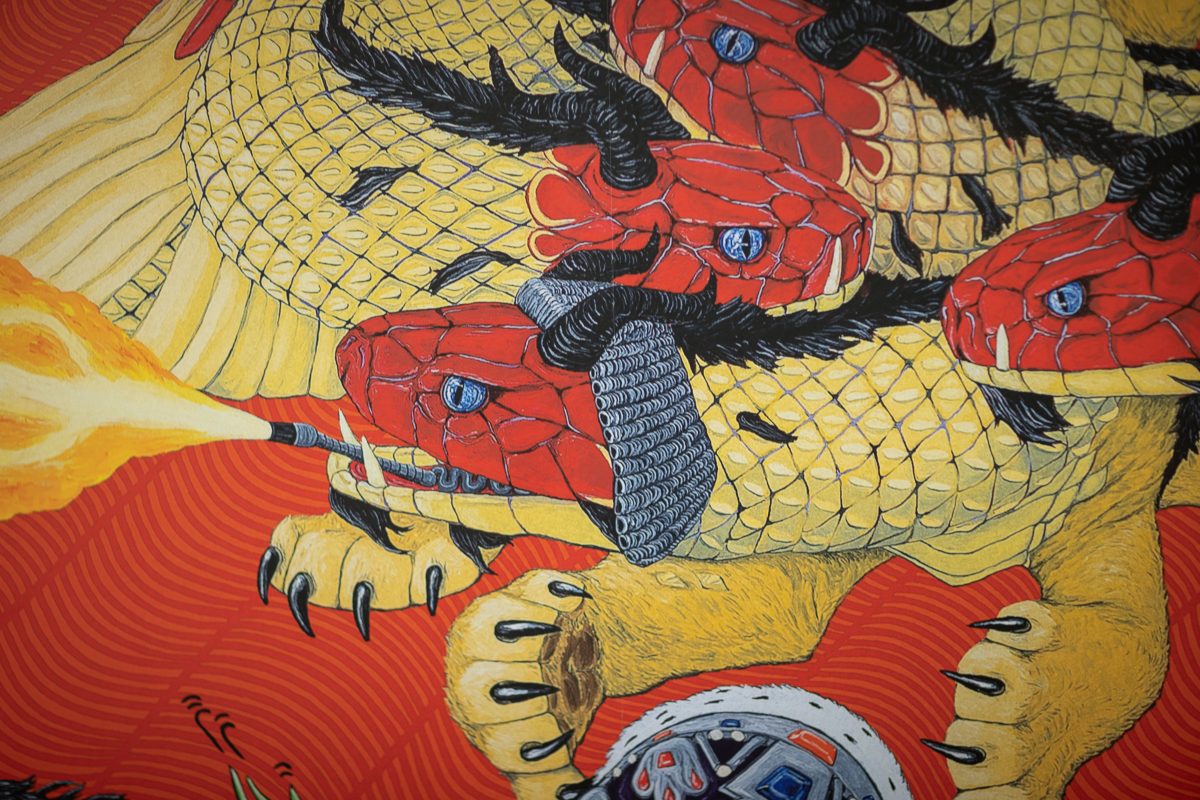
Detail from Paradise Won, at the National Portrait Gallery. Photo: National Portrait Gallery.
Presley says the work needed to be interesting for people passing through a very public space who don’t necessarily arrive with intentions or beliefs about the artwork. It also had to work for the National Portrait Gallery’s collection and architecture.
The arches surrounding each portrait are inspired by English painter Ernest William Tristram’s Reconstruction of medieval mural painting, two angels (c 1927) and include Australian pandanus and wattle.
The individual images are digital colour prints on self-adhesive vinyl film with a 24 karat gold leaf overlay and hand-painted and cut MDF board. Installing the work was a lengthy process but the results are as vivid as a mediaeval fresco on the day it was unveiled.
“I try to make something I want to see,” he says. “I wanted to work with this concrete space with something ornate where I used the scale as much as possible, something that had a real majesty to it.
“I love collaborative processes and using people with different skill sets. Without that, this would be a much harder project.”
Original Article published by Genevieve Jacobs on Riotact.


